Montsalvache
Otto Rahn y la Búsqueda Nazi por el Secreto de los Cátaros
La Berlin de entreguerras era una ciudad conocida en toda Europa por su sub-cultura bohemia y sus jovenes intelectuales. Entre los personajes que ardientemente celebraban los abundantes «ismos» que estaban fracturando las viejas certezas ideologicas, las cuales habian compactado el siglo XIX, pocos individuos eran mas coloridos que un joven de ojos verdes y cabellos oscuros llamado Otto Rahn. Su figura delgada, envuelta en un caracteristico abrigo negro y sombrero tiroles, arrojaba una larga sombra desde esos anos sombrios, una «gran silueta» alrededor de la cual se han acumulado los mitos mas extravagantes. El fue considerado igualmente como mason, rosacruz, luciferino, y un agente de la Sociedad Thule. Como lo plantea el autor Phillip Kerr, los contemporaneos de Rahn no se habrian sorprendido de ver «la Dama Escarlata y la Gran Bestia salir volando desde la puerta del frente» de su apartamento en Tiergartenstrasse. Uno de sus companeros de la Orden Negra de Heinrich Himmler comento en un memorandum interno que el «medio sospechaba que Rahn tenia relaciones con el pueblo pequeno».
Otto Rahn: las conexiones entre catarismo y nazismo
UNA DE LAS FIGURAS que más fascinación ha ejercido en relación al mundo “neocátaro” es Otto Rahn, que buscó el Santo Grial en la fortaleza de Montségur. Miembro de las SS que acabó expulsado de sus filas, dejó una obra escrita breve pero influyente en el entorno hitleriano al amalgamar nazismo y catarismo. Sabemos muy poco de él, pues su trayectoria está rodeada de toda suerte de especulaciones. Y es que su personalidad fue harto chocante: francófilo y al parecer homosexual, se desenvolvió en un universo nazi pangermánico y exaltador de la virilidad.
Así las cosas, los interrogantes sobre Rahn son numerosos, abarcan todos los órdenes de su vida y tienen difícil respuesta con las fuentes disponibles: ¿Fue un estudioso del catarismo o lo empleó como pretexto para labores de espionaje? ¿Actuó como un nazi convencido o su condición de homosexual y la falta de medios le llevaron a las filas de las SS? ¿Murió en 1939 o se orquestó una farsa para “blanquear” sus supuestos ancestros judíos? Al margen de sus móviles, sabemos con certeza que nazificó el catarismo y mereció la atención y la complacencia del máximo dirigente de las SS, Heinrich Himmler.
Otto Rahn: author, poet, Grail seeker, SS officer
In February 2007, Montserrat Rico Góngora published “The Desecrated Abbey”, in which he claimed that Heinrich Himmler, Hitler’s second-in-command and head of the Nazi SS, had made a secret wartime mission to an abbey in Spain, in search of the Holy Grail. Góngora even interviewed Andreu Ripol Noble, a former monk and the only person that spoke German, who was ordered by his superiors to guide Himmler during the visit in 1940. Ripol related that Himmler came to Montserrat inspired by Richard Wagner’s opera “Parsifal”, which mentions that the Holy Grail could be kept in “the marvellous castle of Montsalvat in the Pyrenees” – the mountain range that marks the border between France and Spain.
Otto Rahn im Wikipedia
Otto Wilhelm Rahn (* 18. Februar 1904 in Michelstadt im Odenwald; † 13./14. März 1939 bei Söll (Tirol), Österreich) war ein deutscher Schriftsteller, Mediävist und Ariosoph,[1] der sich mit dem Gralsmythos beschäftigte.
Leben
Schule und Studium
Rahn wurde 1904 in Michelstadt/Odenwald als erstes Kind des Justizamtmanns Karl und Clara Rahn (geb. Hamburger) geboren. Ab 1910 besuchte er das humanistische Gymnasium erst in Bingen, wo er bis zum Beginn des Ersten Weltkriegs lebte. Sein Abitur machte er in Gießen. Dort begeisterte ihn sein Religionslehrer Freiherr von Gall erstmals für die Geschichte der Katharer. 1922 begann Rahn ein Jurastudium in Gießen, das er an der Albert-Ludwigs-Universität Freiburg und der Universität Heidelberg fortsetzte. 1925 bis 1928 unterbrach er sein Jurastudium und betätigte sich als Handelsreisender für verschiedene Verlage.
RELIGION: The Cathars and Otto Rahn
Ed Jajko says:_I would be most interested if Christopher Jones could cite his authorities for the Cathar Christology he presents us. What little I have read suggests that the Cathars had different, not entirely coherent views on Jesus Christ, but that they were not quite in consonance with what Mr. Jones has stated. Reference to a couple of scholarly sources would be much appreciated.
RH: Yes, a few precise sources.
Ed Jajko asked Christopher Jones to give sources for his statements about the Cathars. Christopher replies:
The sources for my comments on the Cathari are all from Cruzada contra el Grial [original German, Kreuzzug gegen dem Gral] by Otto Rahn. This particular translation was done by Fernando Acha and published by Hiperión in Madrid. To the best of my knowledge and a fact that was reconfirmed to me by the current copyright holder in Germany, Rahn's book was never translated into English although Spanish, French and Italian versions exist. The book was first published in 1933.
Prologo de Cruzada contra el Grial, La lucha entre Cátaros, Templarios y la iglesia de Roma
Wolfram von Eschenbach nos informa que Kyot, "el famoso Maestro", trajo a suelo germano la verdadera leyenda del Graal desde la Provenza; y que Chrétien de Troyes (el autor del Parsifal galo, o el Conde del Graal) la modificó. Si bien es cierto que no existe poema épico alguno acerca del Graal escrito por "Kyot", sabemos que a finales del siglo XII un poeta francés de la Provenza de nombre Guyot recorría las cortes más renombradas del norte y sur de Francia; y que entre sus poemas se encontraba una "Biblia" en la que caricaturizaba a sus contemporáneos. Resulta posible atribuir a este Guyot una versión del Parsifal que jamás llegó a nuestras manos.
Otto Rahn: A Hero's Journey
I recently visited the former South of France residence of the legendary Grail hunter Otto Rahn, only to discover that it was scheduled to be demolished, thus ending an era, and prompting this memorial.
I believe Otto Rahn (1904-1939) was a hero; the real Indiana Jones and prototype for Dan Brown’s Robert Langdon character. A tireless explorer, Rahn was a gifted researcher, committed to the quest like no one before, or since. Quite simply, he was a grail hunter extraordinaire.
Rahn was obsessed with the Cathars, and was convinced that their treasure remained hidden in the shadowy crevasses of the Pyrenees. His research led to Montségur, which he believed to be Munsalvaesche, the Mountain of Salvation of Wolfram von Eschenbach’s epic grail romance, Parzival. Not surprisingly, the entire region around Montségur soon became Rahn’s esoteric playground.
A review of Otto Rahn’s study of Grail lore by John J. Reilly
Anyone who undertakes the study of the intellectual underpinnings of Nazi Germany (1933-1945) will soon notice that at least some members of the regime were doing things that are not covered by the typical survey course in political theory. Researchers who attempt to investigate these anomalies will dig through a swamp of popular and crank literature about the Third Reich’s connection to the occult underground, some of it coincident with conspiracy theory and some of it (often the most coherent works) purely fictional. Nonetheless, a sober study of primary sources will reveal that not all the fantastic rumors were made up out of whole cloth.
Otto Rahn Bio
Berlin between the wars was a city known throughout Europe for its bohemian subculture of young intellectuals. Amongst the personalities who hotly debated the many modernist “isms” that were fracturing the old ideological certainties that had glued together the 19th century, few individuals were more colorful or conspicuous than a febrile dark-haired, green-eyed young man called Otto Wilhelm Rahn.
Rahn was welcomed in the cafes and nightclubs of 1930’s Berlin because he was a hyper-intense intellectual – a brilliant talker with a great deal to say but he was also a conspicuous outsider in that he was unfashionably dismissive of the emergent modernism that so excited his peers. Moreover, he had even less empathy with the cynicism and decadence that colored there lifestyle. Rather, like that of most Germans outside of Berlin, Rahn’s sensibility had been molded by influences wholly incompatible with the café society avante-garde.
Otto Rahn (Dutch)
Otto Rahn werd geboren in Michelstadt (Odenwald) op 18 februari 1904. Na zijn middelbare studies (en de eerste wereldoorlog) trekt hij naar de universiteit waar hij aanvankelijk rechten studeert. Maar al spoedig gaat zijn belangstelling uit naar de literatuur en laat hij zich inschrijven aan de faculteit der letteren in Heidelberg. Zijn droom is literair recensent te worden voor een krant of tijdschrift.
Als muziekliefhebber dweept hij met Wagner. Diens "Parsifal" brengt hem in contact met de graallegenden en hun Duitse auteur Wolfram von Eschenbach. Die studie zal hem nooit meer loslaten.

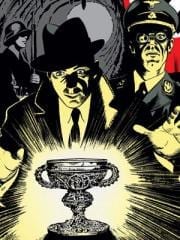
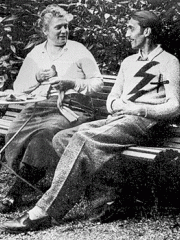
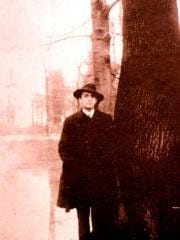


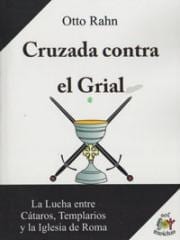
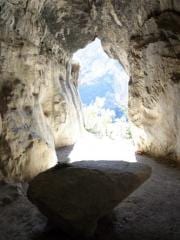
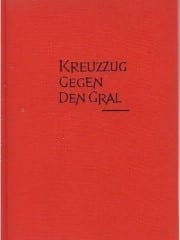
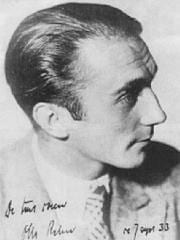
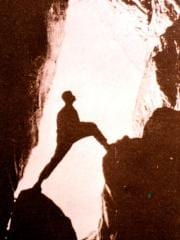
Commentaires récents
il y a 13 années 41 semaines
il y a 13 années 42 semaines
il y a 13 années 42 semaines
il y a 13 années 42 semaines
il y a 13 années 45 semaines
il y a 13 années 51 semaines